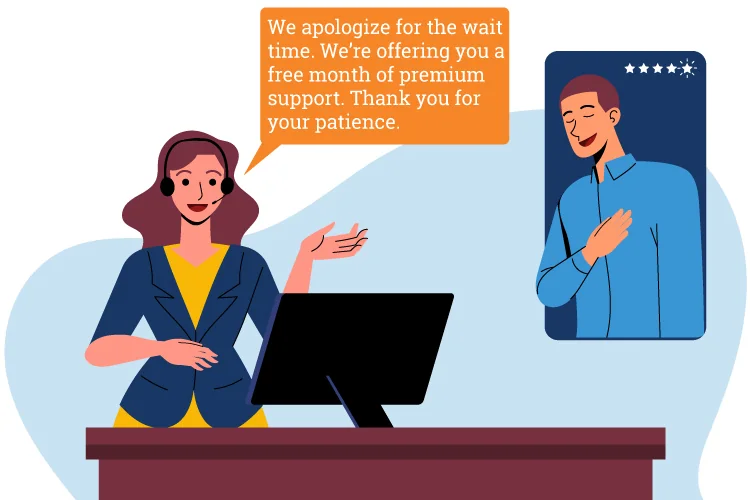A staggering 86% of buyers are willing to pay more for a better customer experience, highlighting the importance of fostering loyalty and trust. For call center managers and supervisors, establishing rapport with customers is not just a task—it's a strategic necessity.
One effective way to cultivate this connection is through gestures of goodwill. These simple yet impactful actions—such as loyalty programs, personalized thank you messages, and exclusive offers—can leave a lasting impression on customers, making them feel valued and appreciated.
Monetary gestures, like cash compensation or refunds, often miss the mark. They can feel impersonal, reducing customer inconvenience to just a dollar amount, and usually don't leave a lasting impression.
On the other hand, goodwill gifts or gestures are much more effective. They can improve customer satisfaction and encourage sharing on social media. When a surprise gift arrives, beautifully wrapped with a personalized note, it can truly delight a disappointed customer. This thoughtful gesture often leads them to share their positive experience with friends and family, amplifying its impact.
What is a Goodwill Gesture in the Context of Customer Service?
A goodwill gesture in the customer service context refers to an action taken by a company to express appreciation and enhance customer relationships. These gestures go beyond standard service interactions, reinforcing the brand’s commitment to customer satisfaction.
Goodwill gestures can include personalized communications, rewards programs, and unexpected tokens of appreciation. They acknowledge customers for their loyalty and patience, helping to build emotional connections with the brand.
The significance of goodwill gestures is profound. They turn routine service calls into memorable experiences, encouraging customers to share positive interactions with others. Additionally, they can mitigate the impact of negative experiences, transforming dissatisfied customers into loyal advocates.
Ultimately, goodwill gestures represent a proactive approach to customer service, emphasizing the importance of rapport and trust. For call center managers and supervisors, implementing these gestures is crucial for creating a customer-centric culture that prioritizes meaningful relationships and exceptional service.
Top 6 Gestures of Goodwill for Improving Customer Experience
In this blog, we will explore six key gestures that can significantly improve customer relationships within the call center and drive loyalty. By implementing these strategies, your team can transform interactions into meaningful connections that enhance customer satisfaction and retention.
1. Loyalty Programs
Loyalty programs are structured initiatives that reward customers for their continued engagement. This could involve earning points for interactions, which can be redeemed for discounts or exclusive services.
Loyalty programs are crucial for fostering long-term relationships with customers. They incentivize repeat purchases and create a sense of belonging and appreciation among customers. Studies show that retaining existing customers is significantly less expensive than acquiring new ones, making loyalty programs a cost-effective strategy.
Implementation Tips:
- Streamlined Enrollment: Make it easy for customers to enroll in the loyalty program during their calls. Train agents to inform customers about the benefits and guide them through the sign-up process.
- Regular Communication: Send updates about points earned and available rewards through emails or calls, keeping customers informed and engaged.
- Tailored Rewards: Offer rewards that resonate with your customer base, such as discounts on services or exclusive access to new features.
For example, a telecom company might establish a loyalty program where customers earn points for each call to customer support. These points could then be redeemed for discounts on their monthly bill or for premium service features. This incentivizes customers to engage more and reinforces their relationship with the brand.
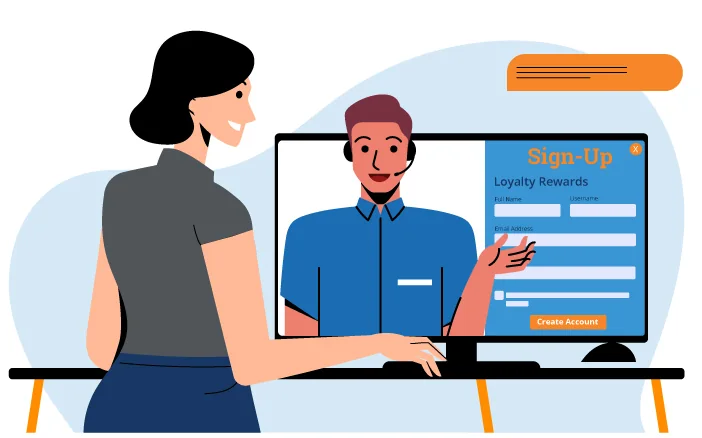
2. Thank You Messages
Thank you messages are personalized expressions of gratitude sent to customers after their interactions with the call center. They can be delivered through various channels, including emails, text messages, or even during follow-up calls.
A sincere thank you can significantly enhance the customer experience. It reinforces the value of the customer’s time and effort, making them feel appreciated. Thank you messages improve customer satisfaction and encourage repeat interactions and positive word-of-mouth.
Implementation Tips:
- Personalization: Use the customer’s name and reference specific details from their interaction to make the message feel authentic and engaging.
- Timing is Key: Send thank you messages soon after the interaction—ideally within 24 hours—to keep the positive experience fresh in the customer’s mind.
- Multi-Channel Delivery: Utilize different channels for delivering thank you messages, ensuring they reach customers where they are most comfortable.
For example, after resolving an issue, a call center could send a personalized email thanking the customer for their patience and trust in their service. This simple gesture can enhance loyalty and encourage customers to reach out again in the future.
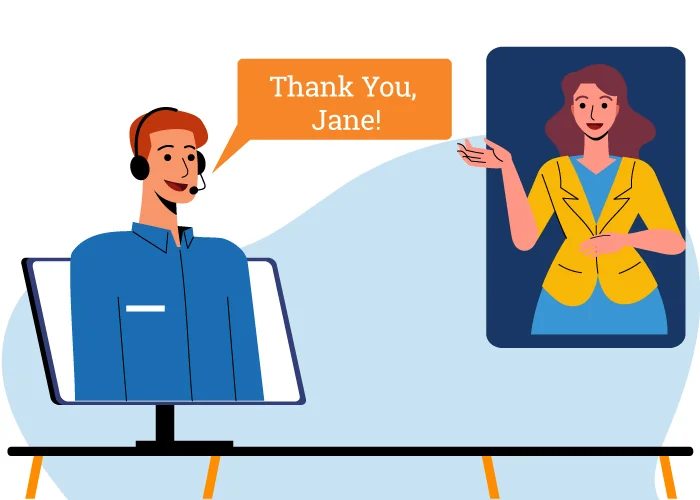
3. Exclusive Offers and Promotions
Exclusive offers and promotions are special discounts or benefits provided only to select customers, often as a reward for loyalty or engagement. These can include discounts on future services, early access to new products, or complimentary services.
Offering exclusive promotions makes customers feel valued and recognized, which can significantly enhance their loyalty. These targeted incentives encourage repeat business and can lead to increased customer lifetime value as customers take advantage of special deals.
Implementation Tips:
- Identify Loyal Customers: Use customer interaction history to identify loyal customers who would benefit most from exclusive offers.
- Clear Communication: Ensure that the details of the offers are clearly communicated during calls and through follow-up emails, making it easy for customers to understand the benefits.
- Create Urgency: Incorporate time-sensitive offers to encourage customers to act quickly, boosting engagement and sales.
For example, a bank’s call center might offer exclusive discounts on loan rates to customers who frequently contact support for account inquiries. This not only rewards their loyalty but also encourages them to take advantage of beneficial services.
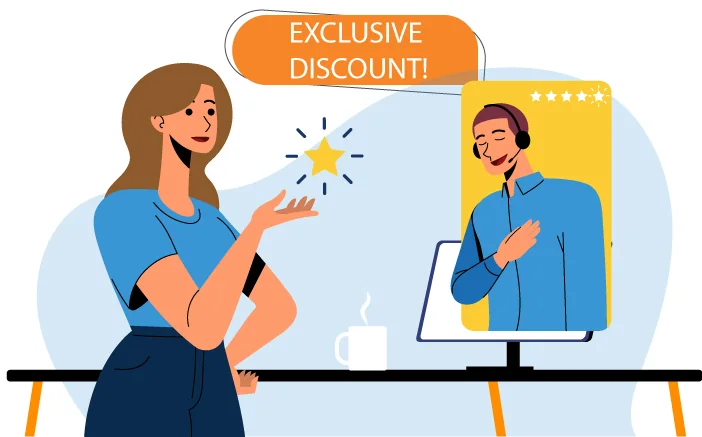
4. Surprise Mail
Surprise mail refers to unexpected correspondence sent to customers, such as thank-you notes, small gifts, or promotional items, aimed at expressing appreciation and enhancing customer relationships.
Sending surprise mail can create memorable moments that leave a lasting impression on customers. This thoughtful gesture helps transform potentially negative experiences into positive ones, strengthening the relationship between the customer and the brand.
Implementation Tips:
- Target Key Customers: Identify customers who have had recent interactions, especially those who had issues resolved, and send them surprise mail to show appreciation.
- Personal Touch: Include handwritten notes or personalized messages to enhance the emotional connection and make the surprise feel more genuine.
- Branded Packaging: Use branded materials for packaging to reinforce brand identity and ensure the surprise mail is immediately recognizable.
For example, after successfully resolving a complaint, a call center might send a handwritten thank-you card along with a small branded gift, like a mug or a notebook. This unexpected gesture can delight the customer and encourage them to share their experience on social media.
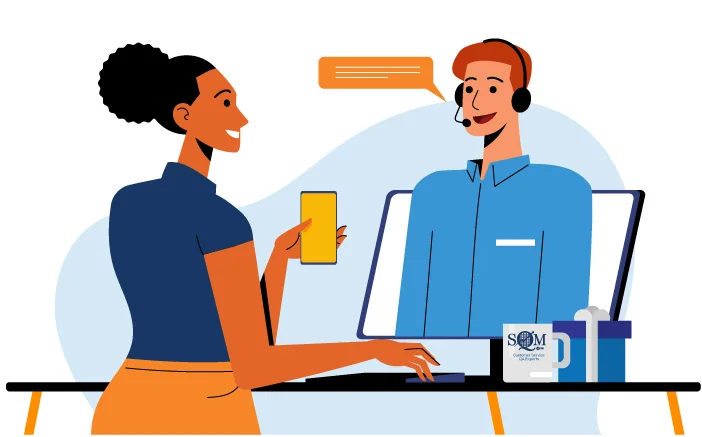
5. Real-Life Value Gestures
Real-life value gestures are tangible actions taken by a call center to provide customers with meaningful benefits that enhance their overall experience, such as useful resources, educational content, or community initiatives.
These gestures demonstrate a company’s commitment to adding real value to customers’ lives. Call centers can strengthen customer relationships and foster loyalty by providing meaningful assistance or support.
Implementation Tips:
- Understand Customer Needs: Utilize data from customer interactions to identify common challenges and create resources that can help, such as FAQs or how-to guides.
- Offer Relevant Content: Share educational materials or tips related to the products or services customers use, enhancing their overall experience and knowledge.
- Community Engagement: Encourage participation in local events or community initiatives, positioning the brand as a supportive member of the community.
For example, a software company’s call center might send out a monthly newsletter with tips for optimizing their product usage. This not only aids the customer but also reinforces the brand’s role as a helpful resource, increasing customer satisfaction and loyalty.
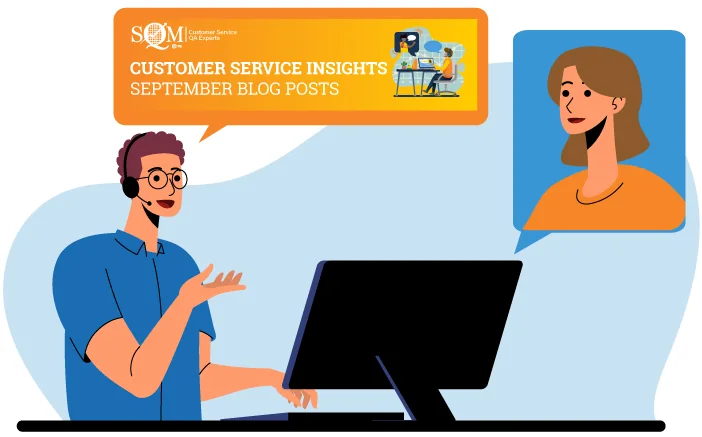
6. Offer a Free Service
Providing customers with a complimentary service can be a powerful goodwill gesture that reinforces the value of their relationship with the company. This could include free upgrades, trial periods for premium services, or complimentary consultations.
Offering a free service demonstrates a company’s commitment to customer satisfaction and enhances the overall customer experience. It shows appreciation for the customer’s loyalty and provides an opportunity for them to experience additional value without any financial commitment, leading to increased loyalty and the potential for future sales.
Implementation Tips:
- Identify Key Moments: Train agents to recognize when offering a free service would be particularly impactful, such as after resolving a complaint or when a customer expresses dissatisfaction during a call.
- Clear Communication: Ensure that agents clearly explain the details and benefits of the free service during the call, making it easy for customers to understand how they can take advantage of it.
- Follow-Up: After the customer has utilized the free service, agents should follow up to gather feedback on their experience, demonstrating ongoing commitment and care.
For example, a call center might offer a free month of premium customer support services to a customer who experienced long wait times during previous calls. This gesture not only compensates for their inconvenience but also gives the customer a chance to experience enhanced service.
